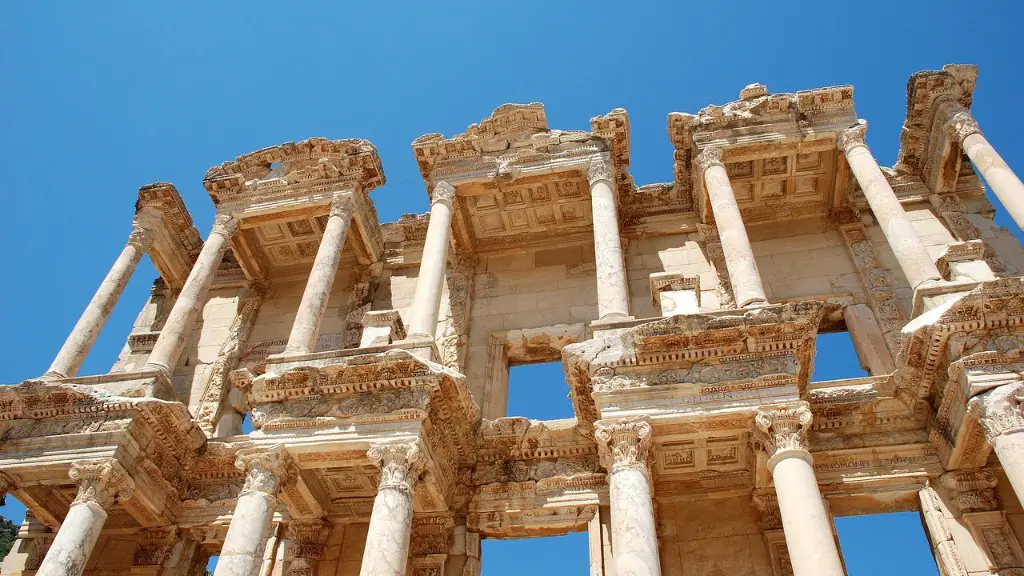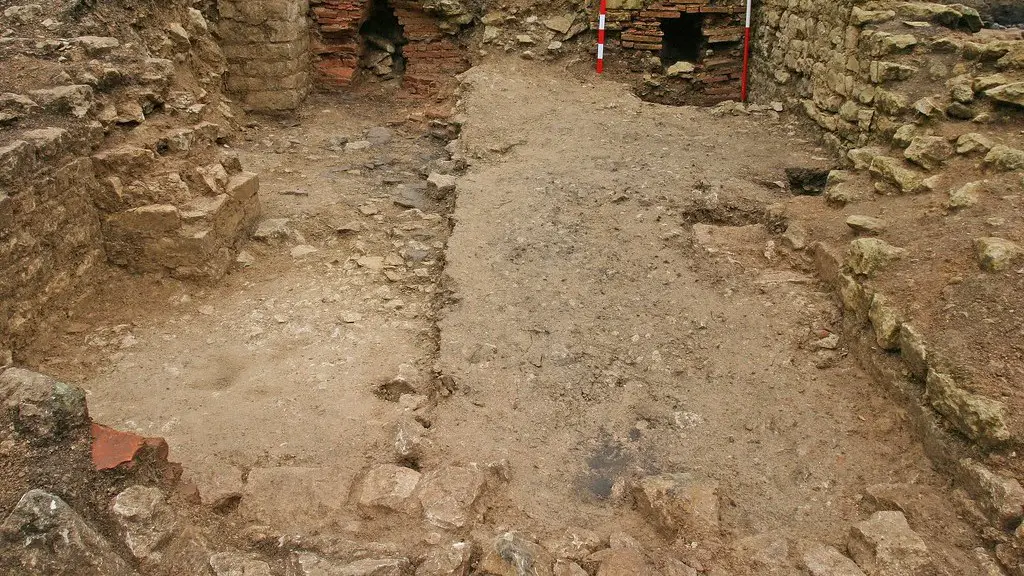Slave Labor in Ancient Rome
The slaves of ancient Rome played a major role in the Roman Empire. Although slavery was not the most widespread form of labor in the Roman world, it was one of the most important, given that it was tightly woven into the very fabric of Roman society. Slaves made up a significant number of the population in both the city of Rome and its outlying territories, and were employed in a variety of roles, ranging from domestic work to skilled craftsmanship.
A great many of the slaves in the Roman world were war captives, taken during conquest and colonization, while many others were the descendents of these captives. People who were born into slavery were called ingenui – or “freeborn” slaves, who were typically owned by the state or by a powerful individual family. From the Roman legal perspective, slaves were considered an entirely different class of citizen, with their own, unique set of rights and obligations.
The word for “slave” in Latin is servus, and in Roman times, slaves were given a wide range of names, which usually reflected their origins or the acquired skills. Slaves who were born into servitude were given the names of their masters, while those who were taken as prisoners of war were often given tribal names that related to their place of origin. Slave owners also gave slaves labor-related names by which they would be identified in their work.
Besides their personal names, slaves in Rome were identified by a variety of different methods. Some slaves were provided with tokens that identified them as belonging to a particular family or organization, while others were branded with the mark of their owner. The practice of branding slaves, however, became less common as the Roman Empire adopted more and more laws to regulate the treatment of slaves. Although slaves did not have the same rights as citizens, they were still guaranteed basic protection from abuse under Roman law.
The conditions of slavery in ancient Rome varied considerably according to the location and the individuals involved. In general, however, the lives of slaves in Rome tended to be fairly hard, if not cruel. Slaves were often overworked and poorly treated, although some were very well respected by their owners and rose to positions of some power and influence. Roman law, as well as Roman morality, provided a certain measure of protection to slaves, but the only true guarantor of their rights was the goodwill of their owners.
Roman slaves were often given certain freedoms, such as the right to engage in certain activities or to sell the products of their labor in the marketplace. This enabled them to acquire personal wealth and gain a certain degree of autonomy. At the same time, they were tightly bound to their owners and could be bought, sold, and even executed at their discretion. Slavery was a major feature of the Roman world, and it remains an important part of our understanding of the Roman Empire.
Slave-Owning Families in Ancient Rome
For the wealthy citizens of the Roman Empire, owning slaves was not only a status symbol but also a sound business investment. Elites in Rome owned large numbers of slaves, and estate owners often had more slaves than freemen working their land. Wealthy Rome aristocrats made their money off their investments in slaves, who provided their owners with cheap labor and a reliable source of income.
The interconnectivity between Roman social class and slavery was evident in the fact that slave ownership was associated with a certain degree of responsibility. Slaves were often viewed as part of a family and given special treatment, or even certain freedoms, by their owners. Many of these owners also had an emotional attachment to their slaves and felt a sense of responsibility for them, despite their inferior legal status.
Slave-owning families were also likely to ensure that the slaves they purchased were well taken care of. Although some Roman families were known to exploit their slaves, other household owners were renowned for their generosity and treat their slaves well. In fact, some slaves were able to rise to positions of importance within their master’s household, with some even achieving greater status than their freeborn counterparts.
Slave-owning families were also heavily invested in the education of their slaves. Slaves were often given a certain amount of autonomy and encouraged to pursue certain trades or crafts. When it came to their education, slave owners often provided their slaves with the same resources they gave their freeborn children, and some slave-owning families even hired teachers to educate their slaves.
By and large, the slaves in ancient Rome had few legal rights and many of their owners exploited them for their own gain. But the relationship between slave and master was not necessarily an adversarial one. Many of Rome’s elites saw their slaves as more than just a source of cheap labor – they saw them as part of the family.
The Laws Regarding Slave Ownership in Ancient Rome
Laws related to slavery in Roman society played an important role in establishing and reinforcing the hierarchical structure of Roman society. Roman law carefully distinguished between the rights of free citizens and those of slaves, and the relative positions of these two groups in Roman society were strictly defined by law. Prisons were an important part of the Roman legal system, and slaves were frequently imprisoned for acts that were punishable in Roman justice.
The legal rights of slaves were severely limited. Slaves were not allowed to own property, vote, or marry a free person – they were completely under the control of their owners and did not have any legal rights of their own. Despite this, ancient Roman law did provide certain safety nets for slaves, such as protection from mistreatment, and some citizens and elite families provided their slaves with a certain degree of protection and autonomy.
In particular, Roman law laid out the rights and obligations of slaves in the event of their master’s death. When the master died, his slaves were set free in a process known as manumission. This allowed freed slaves to take up the same rights and responsibilities as free citizens, provided they had a sponsor who could vouch for them. This was a crucial safeguard for slaves, as it provided a way for them to escape a lifetime of servitude.
Roman law also prohibited certain forms of punishment for slaves, although the degree of protection it provided varied, depending on the region or city. These laws were generally respected by Roman citizens, although there were still cases of brutality and mistreatment of slaves. Roman law also prohibited the buying and selling of freeborn slaves, which was seen as a particularly egregious act. As a result, a wide variety of laws were put in place to protect slaves from abuse.
Slave Rebellions in Ancient Rome
Slaves were typically passive and compliant, but under certain circumstances, some slave rebellions did occur in the Roman Empire. The most famous of these revolts was the Spartacus Revolt, which took place in 73 BCE. The slave leader Spartacus and his followers had escaped from a gladiatorial school in southern Italy and took up arms against the Romans. They roamed Italy for two years, wreaking havoc on Roman power before finally being defeated by the army of Marcus Licinius Crassus.
The Spartacus Revolt was the only major slave uprising in the Roman world, but it was significant in that it illustrated the potential dangers of unchecked slavery and how unruly slaves could be a threat to Roman power. The episode prompted the Senate to pass a number of laws that were aimed at curtailing the power of the slave class. These laws ranged from restrictions on the buying and selling of slaves to increased punishments for those caught engaging in armed rebellion.
The Roman Empire was ultimately able to suppress the revolt, but it did lead to some important changes in Roman law. The laws that were passed in reaction to the revolt provided greater protection for slaves and a greater degree of autonomy, while also increasing penalties for acts of rebellion. By and large, these laws were enforced, although some Roman masters still treated their slaves poorly.
The Decline of Slavery in Ancient Rome
Slave labor played a major role in the Roman economy, but it began to decline in the third century CE, as the Roman world underwent major political and economic changes. This decline was largely the result of increased taxation, which made it difficult for landowners to afford the luxury of owning slaves. The rise of Christianity also had an effect, as the church was widely opposed to the practice of slavery.
The decline of slavery in the Roman Empire was further accelerated by the introduction of a new form of labor known as colonatus. Colonatus was a contractual labor system, whereby workers would be bound to the soil and receive payment in the form of shares in the produce of their labor. This allowed workers to retain more autonomy, without sacrificing their economic security.
The gradual decline of the slave class in the Roman Empire had a deep and lasting effect on Roman society. Roman slaves had provided a significant source of income for the wealthy, and the loss of their services had a significant impact on the wealth of the elite classes. Without slaves, elites were forced to find other ways to produce goods and services, which ultimately led to a more diversified economy in the Roman world.
Legacy of Slavery in Ancient Rome
The legacy of slavery in the ancient world has been long-lasting. Slavery provided a source of cheap labor in the Roman Empire, but it also reinforced class divisions, creating a two-tier hierarchy that lasted well into European history. Slavery was abolished in most of the Roman Empire by the fifth century CE and was eventually outlawed throughout most of Europe in the 18th century.
Today, the practice of slavery does still exist in some parts of the world, and its legacies can still be seen in our culture. Slavery has had an insidious impact on our beliefs and behaviors, leading to marginalization, discrimination and inequality in many societies. Although slavery may have ended centuries ago, its legacy is still felt in the modern world.
Impact of Slavery on Modern Rome
The legacy of ancient Roman slavery has persisted through the centuries, although the focus has shifted from the exploitation of human labor to the exploitation of natural resources. Modern Rome is a city of immense wealth, but much of this wealth is built on the exploitation of its citizens and resources. Rome is one of the most visited cities in the world, yet its citizens suffer from extreme levels of inequality and poverty.
The legacy of ancient Roman slavery is closely linked to modern social issues in Rome, including the over-representation of minority groups in the criminal justice system and the exploitation of migrant workers. Critics of modern-day Rome argue that it continues to facilitate a two-tier system, wherein the wealthy are allowed to continue to benefit from the exploitation of the city’s less fortunate citizens.
The effects of ancient Roman slavery can also be seen in the continued marginalization of minority groups in modern society. Slavery in Rome led to centuries of discrimination against certain racial and ethnic groups, and this discrimination continues in many parts of the world today. The legacy of ancient Roman slavery is a reminder that slavery is still a problem that needs to be addressed, and it is up to all of us to ensure that the rights of all people are respected and protected.
Conclusion
Slaves were an important part of the Roman social and economic order, and their legacy can be seen in the modern world. Slaves in Rome were given a variety of names and were identified through certain methods, and Roman law closely regulated the rights and responsibilities of slave-owning families. Although there were few large-scale slave uprisings in Rome, the Spartacus Revolt led to some powerful changes in Roman law and spurred the gradual decline of slavery in the Roman Empire. Despite the end of slavery in the Roman Empire, its legacy still persists in our society today.





